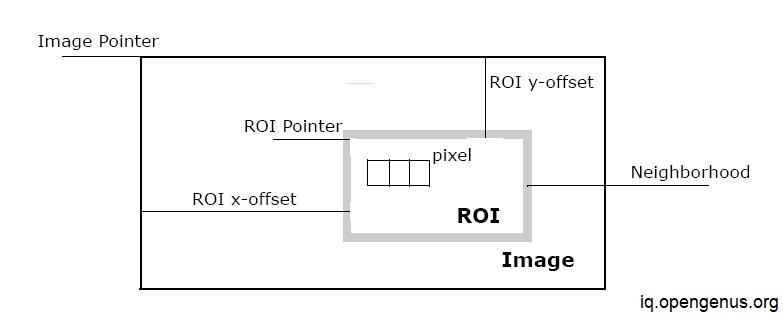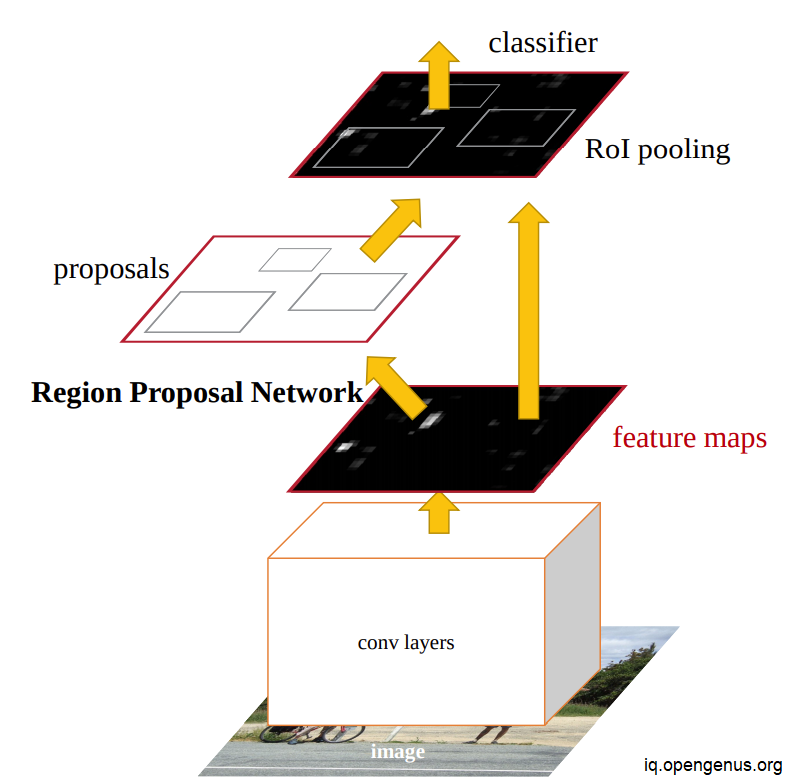
Open-Source Internship opportunity by OpenGenus for programmers. Apply now.
In computer vision and image processing, region of interest (ROI) and ROI pooling are crucial ideas. In typical operations like object identification, segmentation, and tracking.
Region of Interest
ROI refers to a specific area or region inside an image or video frame that contains information important to the job at hand.
Examples of regions of interest -
- 1D dataset: A period of time or frequency on a waveform.
- 2D dataset: The boundaries of an object on an image.
- 3D dataset: The volume of interest (VOI), often known as the contours or surfaces enclosing an item.
- 4D dataset: the outline of an object at or during a particular time interval in a time-volume

Figure - Region of Interest
A ROI is a type of annotation that is frequently used to annotate quantitative or categorical data (such as measurements of volume or mean intensity), whether it is provided as text or in a structured manner.
Three methods of encoding a ROI exist, and each is essentially unique -
- As a fundamental component of the sample data set, with a distinct or masking value that may or may not be beyond the typical range of values that typically occur, and that identifies certain data cells.
- As distinct, solely visual data, such as vector or bitmap (rasterized) drawing components, sometimes with some supplementary plain text in the data format.
- As a distinct piece of organized semantic data with a set of spatial or temporal coordinates.
Applications of ROI -
- In order to measure a tumor's size, the borders of the tumor may be specified on an image or in a volume.
- A polygonal selection from a 2D map can be considered a literal definition of a ROI in geographic information systems.
- In computer vision and optical character recognition, the ROI specifies the limits of an item under examination.
- For the purpose of evaluating cardiac function, the endocardial border may be defined on an image, possibly at various points in the cardiac cycle, such as end-systole and end-diastole.
- Symbolic (textual) labels are frequently applied to ROIs in order to succinctly characterize their contents. Within a ROI may lie individual places of interest (POIs).
ROI Pooling
ROI (Region of Interest) Pooling is a technique used in convolutional neural networks (CNNs) for object detection tasks. It is commonly used in the popular Faster R-CNN and Mask R-CNN architectures for detecting objects in images.

Figure - ROI Pooling
In conventional CNNs, features are extracted from the input picture by passing it through a number of convolutional layers. A fully connected layer receives the output feature map and performs classification on it. However, because it is challenging to locate objects in the feature map, this method is ineffective for object detection tasks.
This issue is resolved by ROI Pooling, which enables the network to focus on a predetermined number of interest regions on the feature map. Bounding boxes produced by a region proposal network (RPN) in Faster R-CNN or the region of interest (RoI) align layer in Mask R-CNN specify these regions.
Each ROI is divided into a predetermined number of bins of equal size in the ROI Pooling process. The highest value for each bin is calculated using the matching area of the feature map. Then, a fixed-length feature vector for each RoI is created by concatenating these maximum values.
The output of ROI Pooling is a fixed-length feature vector for each RoI, which can then be fed to a fully connected layer for classification and bounding box regression.
The benefits of ROI Pooling include the ability for the network to selectively attend to regions of interest and the ability to analyse huge pictures at a lower computational cost by concentrating solely on regions of interest.
In conclusion at this article at OpenGenus, ROI Pooling is a method for object identification tasks that enables the network to focus attention only on certain portions of the feature map that are of interest. To create a fixed-length feature vector for each RoI, a predetermined number of bins of equal size are created for each RoI, and the maximum value from each bin is calculated.
